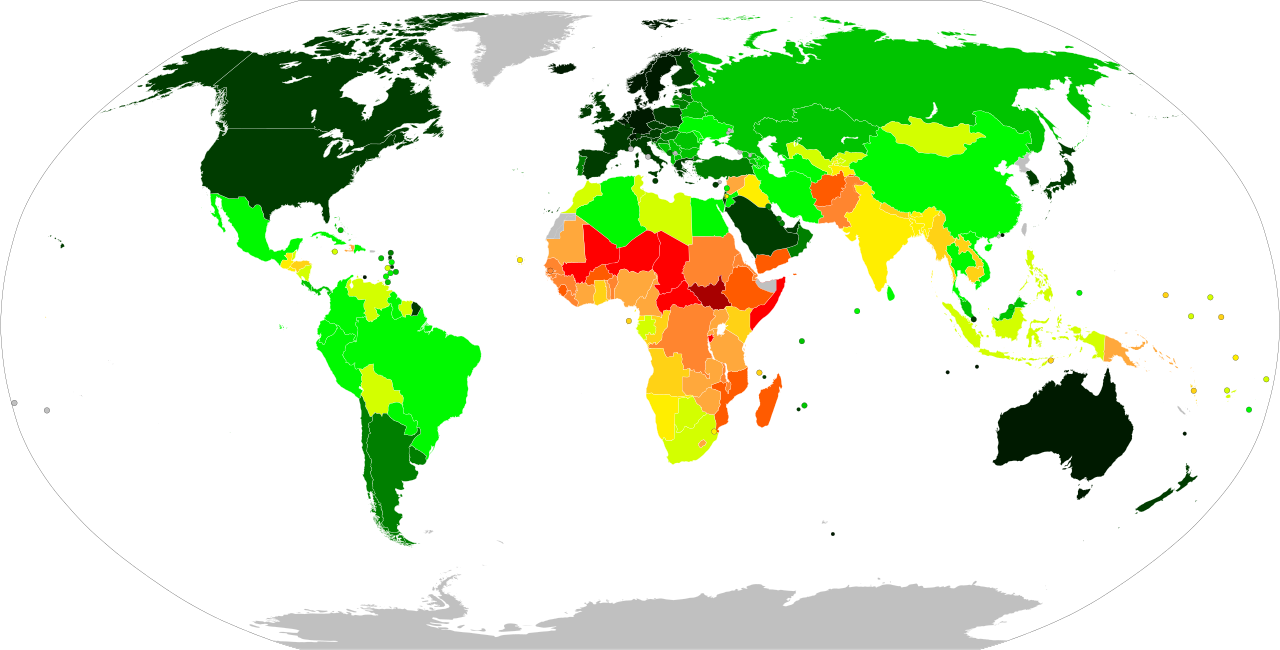Human Development Index by Country Map


Alex Cartwright
Senior Cartographer & GIS Specialist
Alex Cartwright is a renowned cartographer and geographic information systems specialist with over 15 years of experience in spatial analysis and data...
Geographic Analysis
What This Map Shows
This map displays the Human Development Index (HDI) values for various countries around the globe, based on 2023 data published in 2025. The HDI is a composite statistic of life expectancy, education, and per capita income indicators, which are used to rank countries into four tiers of human development. By visualizing these values, the map provides an insightful glance into how nations compare in terms of well-being and quality of life.
Deep Dive into Human Development Index
The Human Development Index is a crucial metric that helps us understand the broader picture of human welfare. It goes beyond mere economic wealth, taking into account the health and education levels of a population. For instance, a country with a high GDP might still rank low on the HDI if it has significant inequalities in health and education. This makes the HDI a more holistic measure of development.
Interestingly, the HDI is divided into four categories: very high human development, high human development, medium human development, and low human development. Countries that fall into the very high category, such as Norway and Switzerland, showcase not only high incomes but also exceptional healthcare systems and educational attainment levels. On the other hand, nations classified under low human development, like Niger and Chad, struggle with issues such as poverty, limited access to education, and high mortality rates.
In the latest data, the top-ranking countries have HDI scores above 0.9, indicating that citizens enjoy a relatively high standard of living. For example, Norway, often hailed for its strong social welfare programs, boasts an HDI score of 0.961. This score reflects not just economic success but also access to quality healthcare and a well-educated population. Conversely, countries with low HDI scores often face challenges like low life expectancy and limited access to education, which are critical for long-term development.
Furthermore, the HDI is recalculated periodically, allowing for a more dynamic understanding of global development trends. For instance, the ongoing effects of climate change, economic shifts, and global health crises like the COVID-19 pandemic have had profound impacts on these scores. Have you ever noticed how these global events can alter development trajectories? The HDI is a living document that reflects these changes in real-time.
Regional Analysis
When examining the HDI by region, distinct patterns emerge. In Europe, for instance, most countries fall into the very high human development category, with the Nordic countries leading the charge. Interestingly, nations like Iceland and Sweden not only enjoy high income levels but also prioritize social equality and educational opportunities.
In contrast, Sub-Saharan Africa presents a starkly different picture. The majority of countries in this region have low to medium HDI scores, with several nations facing significant development challenges. For example, Niger, with an HDI score of 0.394, highlights the struggles many face in accessing healthcare and education, reflecting deep-rooted issues such as poverty and political instability.
Asia shows a mixed landscape. Countries like Japan and South Korea enjoy very high HDI scores, thanks to their advanced economies and robust healthcare systems. Meanwhile, nations like Afghanistan and Yemen remain at the lower end of the spectrum, grappling with conflict and limited access to basic services. It’s fascinating to see how historical, political, and economic factors influence these developmental outcomes in different regions.
Significance and Impact
Understanding the Human Development Index is vital for policymakers and global leaders. It sheds light on where countries stand in relation to each other and highlights areas needing attention and improvement. The HDI can guide funding decisions, target international aid, and inform development programs aimed at improving the quality of life for citizens.
Moreover, the implications of HDI trends extend beyond mere statistics; they impact global stability, economic growth, and social cohesion. Countries with higher HDI scores tend to have healthier, more educated populations, contributing to stronger economies and better governance. Conversely, low HDI scores often correlate with political instability and economic challenges, which can lead to global issues such as migration and conflict.
As we look toward the future, the HDI will undoubtedly evolve with changing global dynamics. The ongoing impacts of climate change, technological advancements, and shifting geopolitical landscapes will all play crucial roles in shaping the development trajectories of nations. Understanding these trends through the lens of the Human Development Index will be essential for fostering a more equitable and sustainable world.
Visualization Details
- Published
- September 19, 2025
- Views
- 72
Comments
Loading comments...